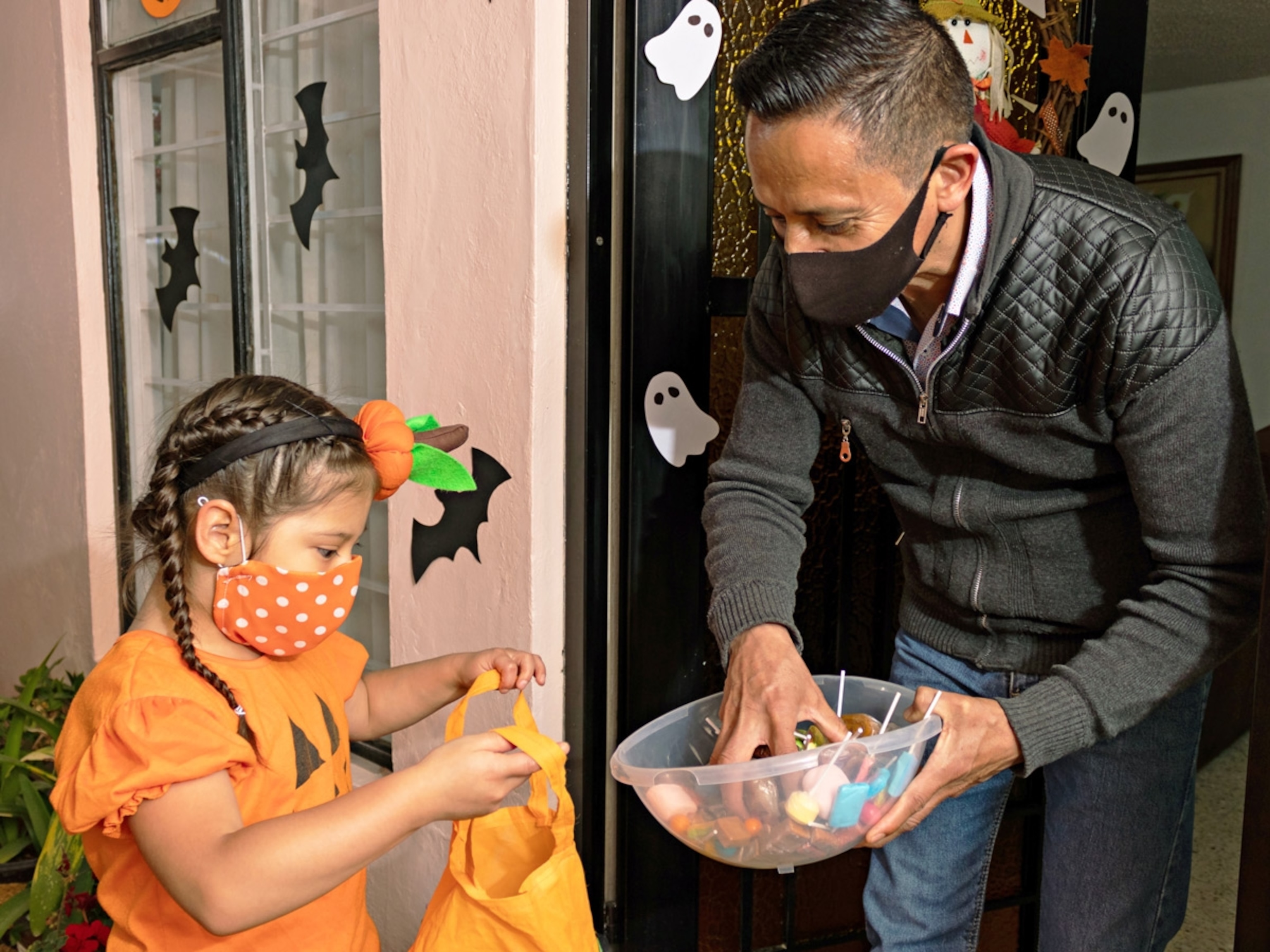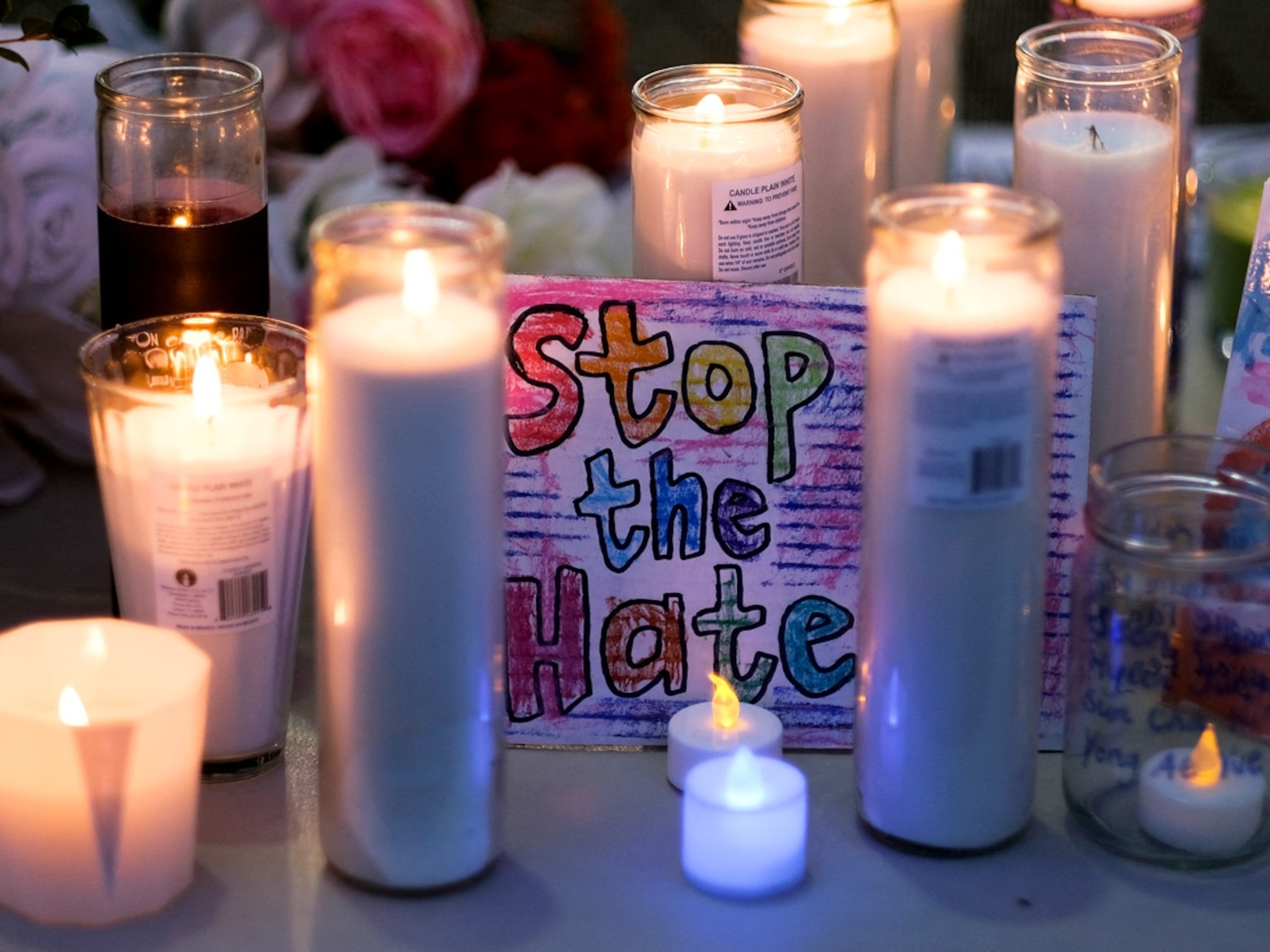
Can kids wear that? What to know about culturally insensitive costumes
Your child would never insult anyone on purpose, but Halloween costumes that seemed OK years ago might not be anymore. Find out how to do the holiday sensitively.
Alissa Agnello wasn’t sure what to do a few Halloweens ago when her “very white” son, then three, wanted to be Maui from Disney’s film Moana. The character—based on a demigod from real Polynesian lore—inspired a line of costumes that had received backlash over cultural insensitivities, and she was concerned that her son’s outfit would disrespect the culture and stereotype a people.
“We compromised by dressing him in a shark costume with Maui’s hook, so he was Maui in another form,” the Seattle mom says. “I don't know if that was the right way to go, but he was happy and we avoided using tattoos and changing his hair.” (The Walt Disney Company is majority owner of National Geographic Partners.)
By giving careful thought to the costume and avoiding misrepresenting a cultural image, experts say Agnello and her son made a creative and sensitive decision. “The fact that the mother paused to think about the deeper implications is the first big step,” says Chotsani Williams West, executive director of diversity, equity, and inclusion at Adelphi University. “It’s important to think about other people and how it may feel for them.”
Experts define cultural appropriation as when members of a dominant social or ethnic group (in the United States, that’s usually white people) inappropriately adopt elements of another culture. On Halloween, this could mean putting on a Native American-style headdress, donning a giant sombrero and serape, or wearing a yarmulke when it's not part of your culture.
Playing on cultural stereotypes can be upsetting, but so can simply taking elements from someone else’s heritage. “It’s as if someone in your classroom, or someone who has a lot of power and privilege, takes your school project or idea, and they put their name on it and try to take credit for it,” says Renée Gokey, teacher services coordinator at the Smithsonian Institution’s National Museum of the American Indian and a citizen of the Eastern Shawnee Tribe of Oklahoma. “In a way, it's a form of stealing.”
Kids usually don’t do this intentionally. But it’s especially easy to do on Halloween, when mass-marketed ethnic costumes seem to validate looks that are insensitive. Learning about cultural appropriation can help kids avoid hurting others’ feelings as well as learn to respect other cultures. Here’s how to figure things out.
Understanding cultural appropriation
Most cultural appropriation happens when someone doesn’t understand the culture they’re copying. “When you take on particular elements of a culture without understanding the lived experiences of those individuals to whom they belong, it’s disrespectful,” says Fatima Rodriguez Johnson, associate dean for diversity and inclusion at Canisius College.
For instance, when a child wears an Indian bindi or a kimono with a Japanese-style wig, Johnson says it turns real people into stereotypes. “They can be minimized,” she says. “A friend in the classroom can look at the costume and somehow feel ‘less than,’ as in, ‘Is that how you see me?’”
Cultural appropriation usually involves a person of privilege copying a look from a culture that experiences discrimination. “The individuals can't take those things off,” Johnson says. In other words, a child who dresses up as a mariachi musician may not understand how discrimination feels to Mexican people—and that discrimination doesn't go away after Halloween costumes come off.
Take, for example, dreadlocks, or "locs." West explains that historically in the U.S., many Black people have been discriminated against for wearing natural hair texture and styles; in fact, plenty of schools have actually disciplined Black students for wearing styles such as locs or braids. Wearing a style that has caused others to be persecuted can be hurtful.
Cultural appropriation can also be seen as minimizing the cultural importance of the outfit. “It’s quite extensive how much ridicule [Native American] tribes have received for their dress,” says Dan SaSuWeh Jones, member and former leader of the Ponca Nation in Oklahoma. “We don’t want people taking the things that we take so seriously and making light of or making fun of them.”
How to spot red flags
West says recognizing cultural appropriation is about considering other people and honoring sacred traditions. "When you’re just taking elements from another culture and not celebrating it in its fullness or understanding it, it doesn’t honor the culture that you most likely admire,” she says. “It takes away from underrepresented groups.”
Here are some red flags to look for.
Playing on stereotypes. Oversimplified versions of people are OK when everyone’s in on the joke—say, when kids pretend to be their teachers in a class revue. But no one wants to be made fun of without their permission.
“Wearing certain costumes can perpetuate stereotypes and bias even when it's done for an hour or two at a party,” Johnson says. “There are lived experiences associated with some costumes, and it may not be the lived experiences of the wearer.”
Posters from the “We're a Culture, not a Costume” campaign, launched in 2011 by students at Ohio State University, can provide kids with a visual understanding of how costume appropriation can be seen as ridiculing other cultures. “It’s about not reducing cultures to this narrow representation that you took off a hanger in the store,” says Tiffany E. Barber, assistant professor of Africana studies and art history at University of Delaware.
Using religious symbols. Experts like Gokey advise against turning religious or symbolic iconography into a costume, as is the case with most Native American outfits, but also applies to dressing as, say, a Tibetan monk. To people of these cultures, the “costume” is not a costume.
First, ask your kid why they want to dress in this costume. If it’s out of respect for the culture—for instance, if a child is interested in Buddhism or wants to emulate a hero like Sitting Bull (which would include sacred regalia)—Gokey recommends that families reach out to people with a deep knowledge of the culture to discuss options that won’t offend—and more importantly, expand your child’s understanding of the culture. (And if it seems like a child would just find the costume “funny,” nix it right there.)
Imitating bodies, not qualities. Consider if a child is depicting admired qualities of a person—or just trying to imitate their bodies. “Say I want to be LeBron James," Barber says. "You might wear a jersey and a sweatband around your head. But you’re not changing your skin color. That's when we get into the unsavory history of treating people’s bodies as commodities instead of emulating a profession.”
Imitating a culture the child knows little about. Making friends with kids from different cultures can help your child better understand how others feel. “If my child has never interacted with anyone from that community at all in a meaningful way, that's a red flag for me," Johnson says. “Because what knowledge am I leaning into?”
Do this, not that
Kids might not be able to avoid the lure of popular, culturally appropriative costumes. But by focusing on appreciation instead of appropriation, you can help your child turn a disrespectful costume into one that honors and celebrates.
Native American costumes. With 574 recognized tribes in the United States, the likelihood of misrepresenting Native Americans is pretty high. “It can reinforce stereotypes,” says Gokey, who believes that all Native American costumes are inappropriate because real Native American clothing and headwear aren't "costumes"—they're considered regalia and therefore sacred to the wearer. “There is no ‘one’ Native American.”
She adds that a Halloween costume can’t convey the significance of Native American culture. Take feathers, for instance. “Feathers are each earned for acts of bravery,” Gokey says. She compares this to a regular citizen who has never served in battle wearing a Purple Heart—awarded to soldiers wounded or killed by enemy action—because it looks cool.
An alternative could be dressing as a character from Native American lore, such as the trickster Coyote or Bigfoot, who both show up in nearly every tribe’s stories. “They’re meant to be fun characters in our mythology,” says Jones, author of the children’s book Living Ghosts and Mischievous Monsters: Chilling American Indian Stories. “They’re not real people.”
Other iconic representations from different cultures. Dressing as a ninja or samurai, or in cultural garb like a kimono, isn’t necessarily disrespectful. But Yuko Kaifu, president of Japan House Los Angeles, an organization that works to strengthen bonds between the U.S. and Japan, says how the costume is worn matters.
For instance, she says showing too much neck or breast when wearing a kimono is disrespectful. She adds, “You have to make sure that the left-hand side of the collar is on top of the right-hand side. The other way around is to be worn by the dead.” Alternatively, she recommends dressing as an anime character. (That way, kids are copying a character and not a culture.)
Researching the context of a cultural icon helps deepen children’s respect for others. For instance, Natoya Haskins, associate dean and director of diversity and inclusion at College of William and Mary School of Education, says when her nine-year-old Black son discovered certain Japanese-inspired symbols he wanted to wear as a ninja might not be realistic, he dropped them. Hawaiian cultural educator Kumu Keala Ching gives the example of incorrectly portraying hula dancers, who are viewed by many simply as costumed dancers but are actually important ancestral storytellers in Hawaiian culture and are often environmental stewards.
“Study what a hula dancer is and what is the right attire,” he says.
Fictional and real-life heroes from a different culture. Barber says mimicking a fictional character’s skin color or hair becomes a stereotype. But characters come with plenty of other attributes.
For instance, Maui costumes often come with tattoos, even though it’s considered disrespectful in many Pacific cultures to wear markings from people or places you’re not spiritually or physically connected to. But Ching says that kids should still be able to express their love of this iconic Polynesian hero by thinking about what qualities they admire most about him. For instance, they can make their own version of Maui’s fishhook or the jewel he carries, which represent his strength and eco-stewardship in the movie.
For a character like Black Panther, Barber advises focusing on the costume, which has little to do with the character's hair texture or skin color. “Black and non-Black children may self-identify with the character differently across racial and cultural contexts,” she says. “So it’s especially important for non-Black children to focus on the character’s costume itself rather than the physical attributes of the man or actor underneath to avoid insensitive and inappropriate masquerading.”
Focusing on qualities instead of physical attributes applies to real-life heroes too. “What are the facts and things we want to share? And how do we then demonstrate that in a costume?” Johnson says. “You still will be genuinely who you are.” So if a white child wants to be Thurgood Marshall, he might wear a robe and carry a gavel; that way, when someone asks who he is, the kid can articulate his hero.
And though Halloween costumes and appropriation can bring up some challenging conversations, Jones points out that they present a great opportunity for kids to learn about each other. “The beauty of culture is that we all do things differently,” he says. “That's what we should find in each other that makes life worth living. It’s how we grow in this world. It’s how we grow to know one another.”



